Honduras Coffee Bean Taste Sweet Orange Manor Coffee Bean Light Roast Hand Brewed Ground Brewed Flavor Description
Coffee beans in Honduras were not favored by the public at first. When coffee broke out in the surrounding Guatemala and El Salvador, Honduran farmers were still struggling to survive.
Honduras is located in the north of Central America, facing the Caribbean Sea to the north, the Gulf of Fonseca in the Pacific Ocean to the south, Nicaragua and El Salvador to the east and south, and Guatemala to the west. It is mostly mountainous and plateau, with a tropical climate, mild temperature and abundant rainfall. It is an ideal place for coffee growth. After comparing several coffee beans from China and the United States, Qianjie Coffee found that they all have flower and fruit aroma and soft fruit juice. Would anyone say that not every country has its own unique flavor characteristics? It is true that every time Qianjie Coffee introduces a country, it will first point out what the coffee flavor characteristics of this country are, which is convenient for everyone to remember, but there is one thing: the border is the boundary of people's own division, and coffee beans cannot change immediately because they cross national boundaries.
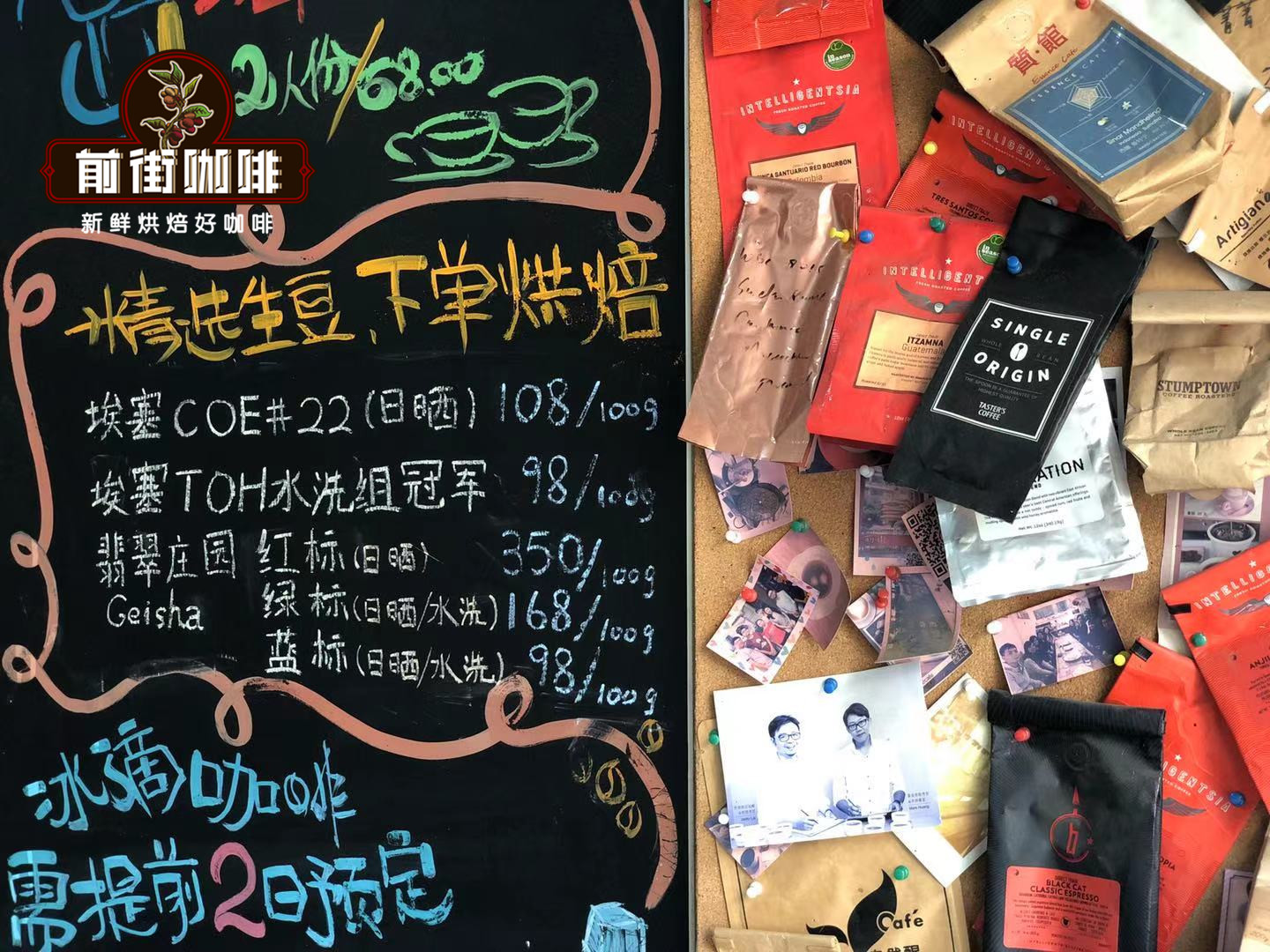
Qianjie Coffee believes that good coffee roasting can reflect the flavor of coffee producing areas. For example, Yega Xuefei should have the taste of Yega Xuefei, and then develop other possibilities on this basis, which is the only criterion for Qianjie Coffee to determine coffee roasting. Back to Honduras coffee, although its coffee flavor will be similar to that of neighboring countries, Honduras can feel the elements of exotic spices in the aroma, the latter part will be full-bodied with nut chocolate, and the overall performance will be balanced and layered.
Introduction to the Coffee country of Honduras
Honduras is not only the largest coffee producer in Central America, but also the second largest producer of washed Arabica beans in the world if only washed Arabica beans are counted. At the beginning of the 21st century, Honduran coffee surpassed bananas to become the most important cash crop in the country. Banana production is dominated by large American companies, but coffee growers are all small farmers. There are currently 110000 coffee farmers in Honduras. Manual picking of coffee fruits is the main harvest method, and the picking season is from November to March every year.
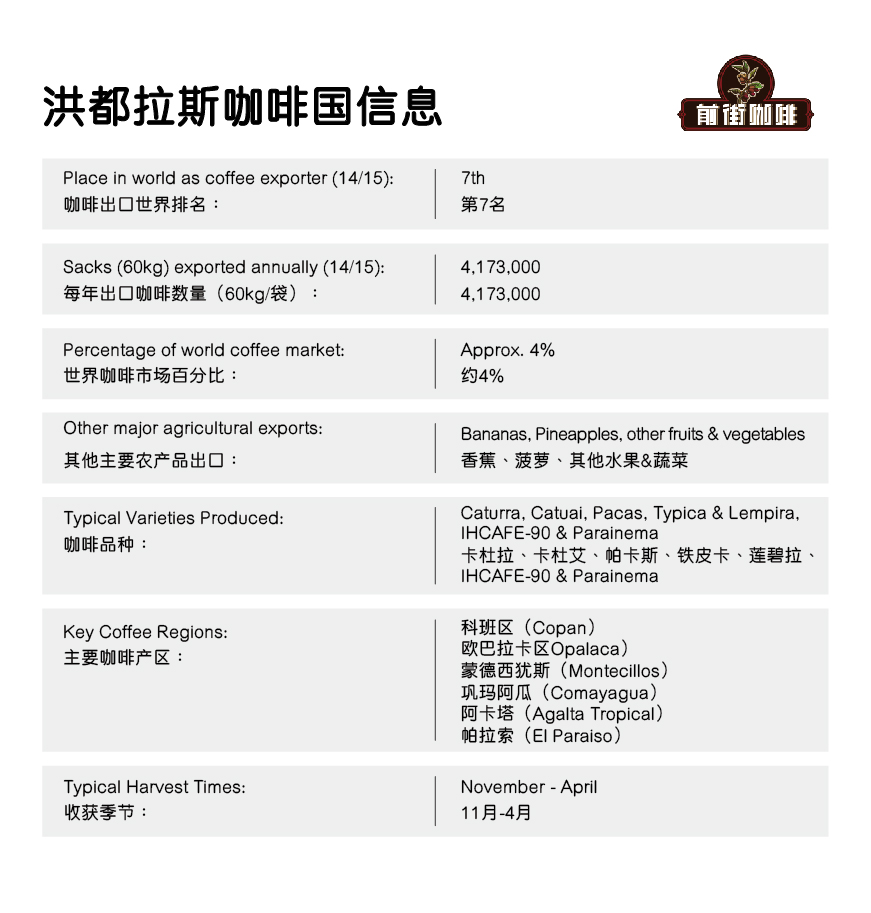
Honduras produces two kinds of coffee of very good quality, which are highly respected by coffee lovers. One is "Highland Coffee", which grows at an altitude of 1000 to 1500 meters, and the other is "selected Highland Coffee", which represents the highest level of Honduras, which grows at an altitude of 1500 to 2000 meters. Most of the Honduran coffee is exported to the United States and Germany.
Coffee development in Honduras
Honduran coffee was first introduced to Honduras by Spanish merchants in the late 18th century. Coffee was grown on a small scale in Honduras in 1804. In fact, there are historical reasons for the late development of coffee in Honduras, which is due to the lack of transportation construction connecting the producing area and the port in Honduras, which leads to the slow start of the coffee industry in Honduras. However, after 1970, the government created the official Instituto Hondureo del Cafe (IHCAFE) for coffee, which is dedicated to improving the quality of coffee, and coffee trees can be planted all over Honduras, allowing Honduras to overtake Costa Rica and Guatemala in coffee production in 2011.
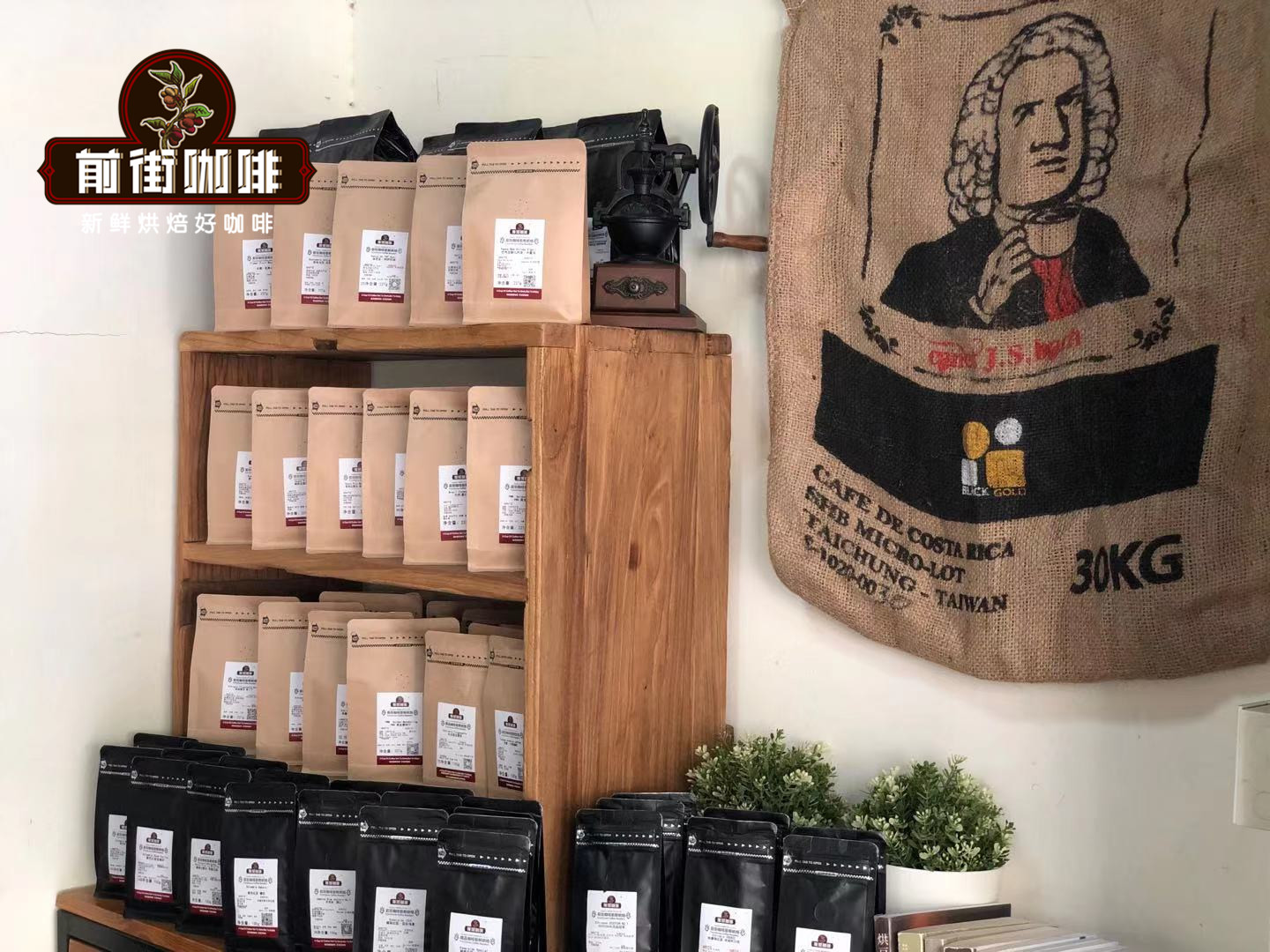
In 1975, coffee production fell sharply due to frost in Brazil, while Honduras took the opportunity to take advantage of the surge in coffee production from 500000 bags to 1.8 million bags and was looted. It was only after that that coffee production in Honduras really developed. In the 1990s, Central American boutique coffee rose, while other countries won by quality, while Honduras lagged behind in coffee quality. The main reason is that in the process of raw bean treatment, due to abundant and uncertain rainfall in the mountain area, the final stage of drying is affected. In 2004, for the first time in Honduras, the Zhuoyue Cup Raw Bean Competition was held. 21 coffees from all over the country were recognized and participated in online auctions. In 2011, Honduras became the highest coffee producer in Central America and the second largest Arabica coffee producer in the world.
Today, Honduras has become one of the top ten coffee producers in the world and the second Arabica coffee producer in the world. Coffee has played an important role in its economy and national development. There are 280000 hectares of coffee plantations in Honduras, mainly small coffee plantations, most of which are less than 3.5ha. These coffee plantations account for 60 per cent of all coffee production in Honduras.
Characteristics of Honduran Coffee
The average planting height is more than 1100 meters above sea level. The main varieties of coffee are Arabica, including Kaddura, Kaduai, Pacas and Tibica, and the treatment is mainly washed with water. Honduran coffee is characterized by a wide variety of flavors, the best of which have complex fruity aromas and vibrant, juicy acidity. Mellow thickness and sweetness are quite high, with fruit tone, but sometimes with nutty, taffy aromas, is a lot of layers of coffee.
Coffee grading system in Honduras
Strictly High Grown (SHG): over 1200 meters.
High Grown (HG): over 1000 meters.
Central Standard (CS): grow more than 600m above sea level.
Six major coffee producing areas in Honduras
Honduras coffee can be divided into six major producing areas, mainly located in the western and southern regions of Copan, Opalaca, Montecillos, Comayagua, Agalta Tropical and El Paraiso. The average height of high-quality products is more than 1100 meters above sea level. 69% of the coffee grown in these areas is HG, and 12% is SHG,19% and CS.
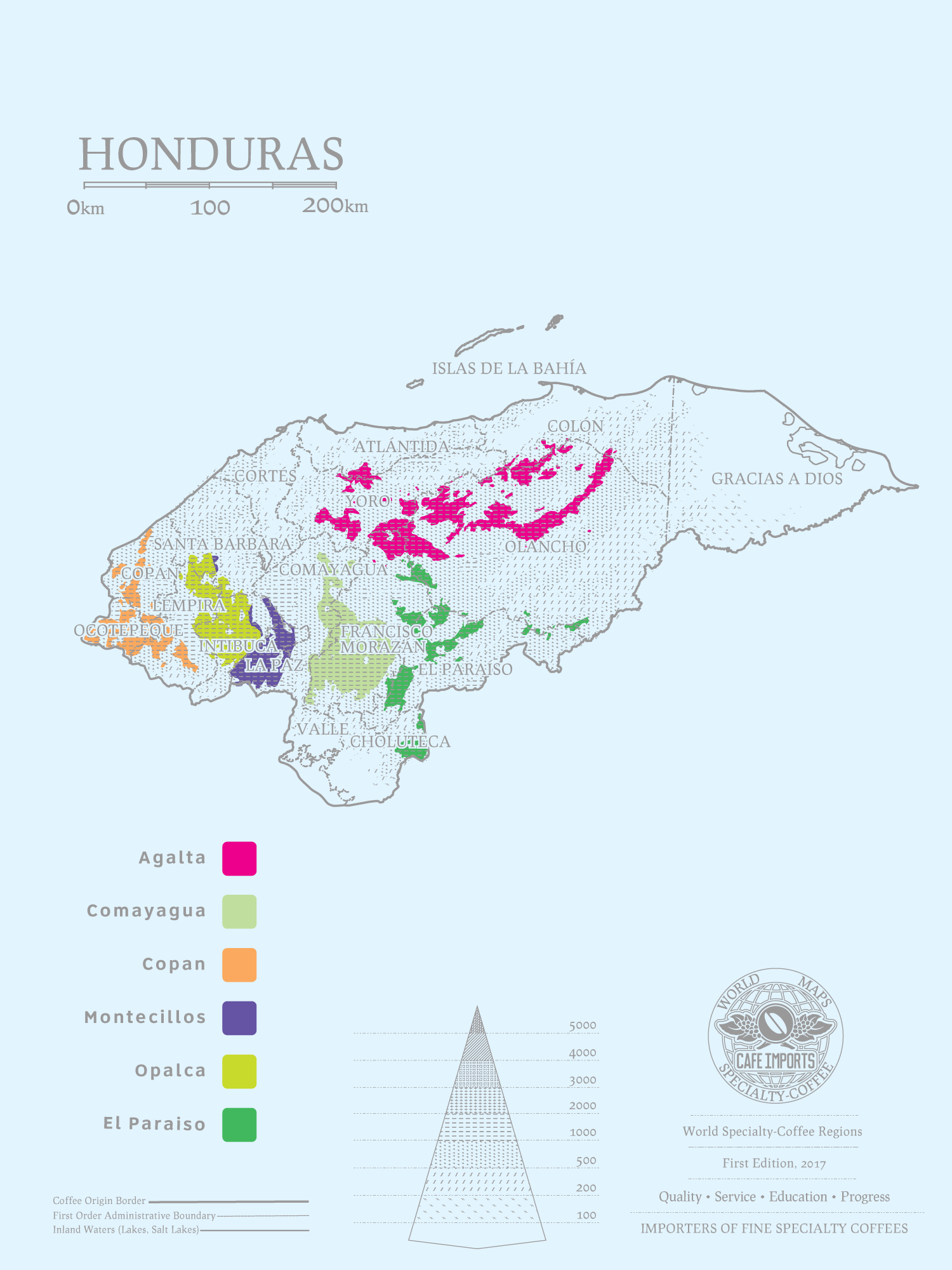
1. Section area (Copan)
Location: located in western Honduras, bordering Guatemala, including Copan, Okotopec, Cortez, Santa Barbara and Lompila. Altitude: 1000-1500 m; temperature: 11.5-22.5m; precipitation: 1300-2300 mm; harvest: November-March; Qianjie pass the cup test of coffee beans in the producing area, its flavor shows a strong chocolate flavor, characterized by the sweetness of honey and caramel, and the fruit flavor is relatively light.
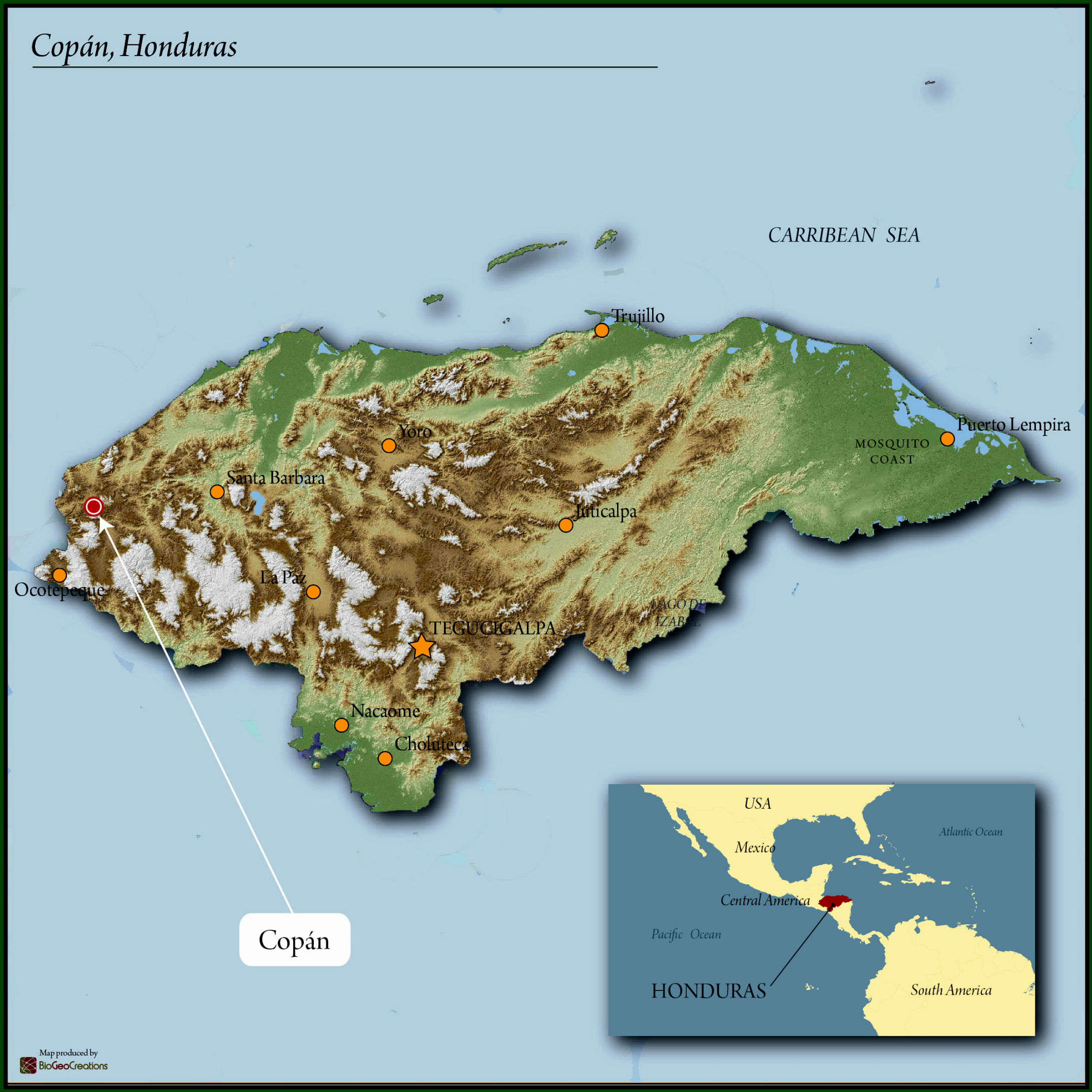
Qianjie Coffee Honduras Twin Flower Manor
Production area: Copan
Manor: twin Flower Manor (Las Gemelas)
Altitude: 1250
Variety: red Kaduai
Treatment method: insolation
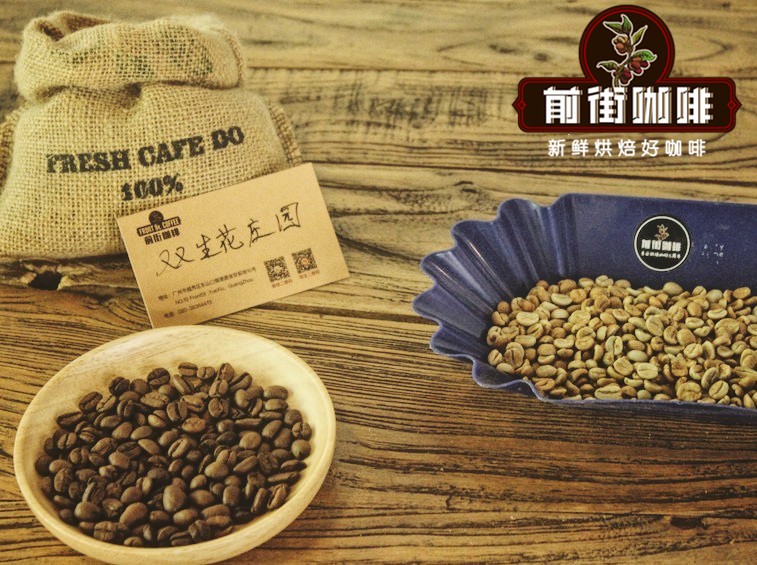
Analysis of raw beans of Qianjie coffee & experience of baking
In front of the street, it was observed that the bean was light green, the silver skin on the surface of the raw bean was more, and the particles were short and uniform, smelling of sour grass and pear. When the front street baker saw the bean, he saw that the elevation of the bean was not very high, and it was the treatment of the sun, so he decided to use a lower temperature to enter the bean, and then use the medium heat to slowly reduce the fire to bake the bean.
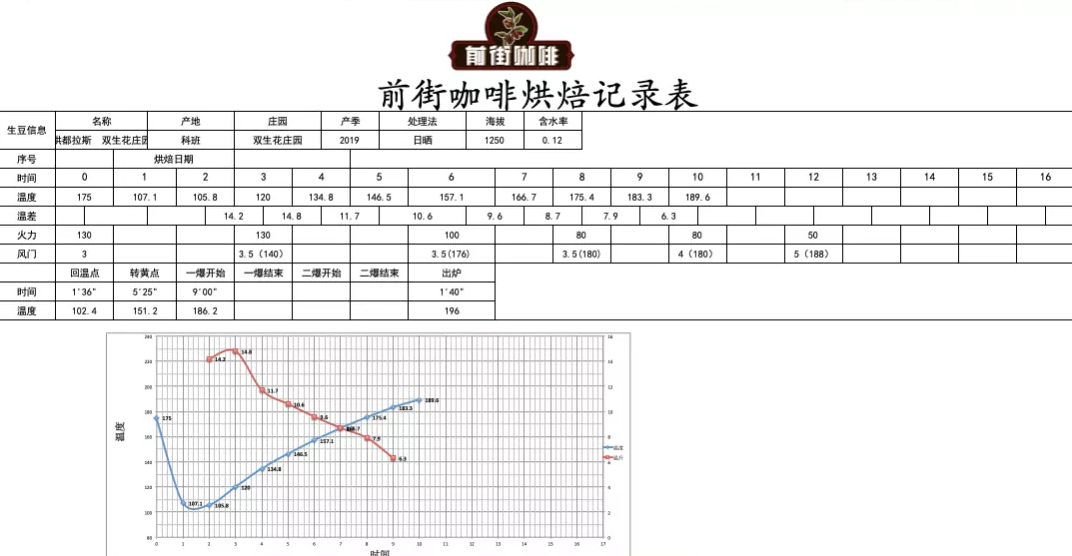
Baking machine Yangjia 800N (300g baking capacity): immediately enter the pot when the furnace temperature reaches 175℃, the firepower is 130C, the throttle is set up 3, the temperature recovery point is 1mm / ℃, the throttle is open to 3.5g, the firepower is unchanged; when the furnace temperature is 151.1 ℃, the bean meter turns yellow, the grass smell disappears completely, and enters the dehydration stage, when the furnace temperature reaches 176℃, the firepower is adjusted to 100, the throttle remains unchanged. At 8: 28 ", ugly wrinkles and black markings will appear on the bean watch, and the smell of toasted bread will obviously turn into coffee, which can be defined as a prelude to an explosion. At this time, it is necessary to listen carefully to the sound of the explosion point, and the throttle will be adjusted to 4". After the explosion, the development of 1 cup after the explosion will be 40 ", and 196 ℃ will be put into the pot.
Suggestion on brewing coffee in Qianjie
Filter cup: Hario V60
Water temperature: 90 ℃
Amount of powder: 15g
Powder / water ratio: 1:15
Degree of grinding: medium and fine grinding (80% pass rate of standard No. 20 screen)

Qianjie Coffee three-stage brewing technique: the first stage of water injection is steamed with 30 grams of water, the steaming time is about 30 seconds, the second stage is injected to 125 grams of water, and when the water level is about to expose the powder bed, continue the third stage of water injection to the end of 225 grams, remove the filter cup when the water level is about to expose the powder bed, and the extraction time is 2: 00 ".
Cooking flavor: Brown sugar, berries, raisins, fermented wine.
2. Opalaca: 1100-1500 m above sea level; temperature: 11.5-22.5m; precipitation: 1400-1950 mm; harvest season: November-February; varieties: Bourbon, Tibika, Kaduai, Barr. Opalaca is located between Santa B á rbara, Intibuca and Lempira. Qianjie Coffee has a very delicate acidity and balanced overall performance, with tropical fruits such as grapes and mulberries on the palate. the finish is sour and sweet, showing a strong lemon flavor, neutralized by the sweetness of honey and caramel, with obvious fruit flavor.
3. Montesius (Montecillos) altitude: 1200-1600 m temperature: 12-21.2mm;; precipitation: 1300-2300 mm; harvest season: November-April; varieties: bourbon, Kaduai, iron pickup. Montecillos is located between the La Paz, Comayagua, Santa B á rbara and Intibuca regions. Qianjie Coffee has passed the cup test of coffee beans in this producing area. Its flavor is full of rich fruit and sweet aromas, with lemon and floral flavors. Lemon and fruit aromas are important features, especially peaches and oranges, with lively and bright acidity, velvety texture and a lingering finish.
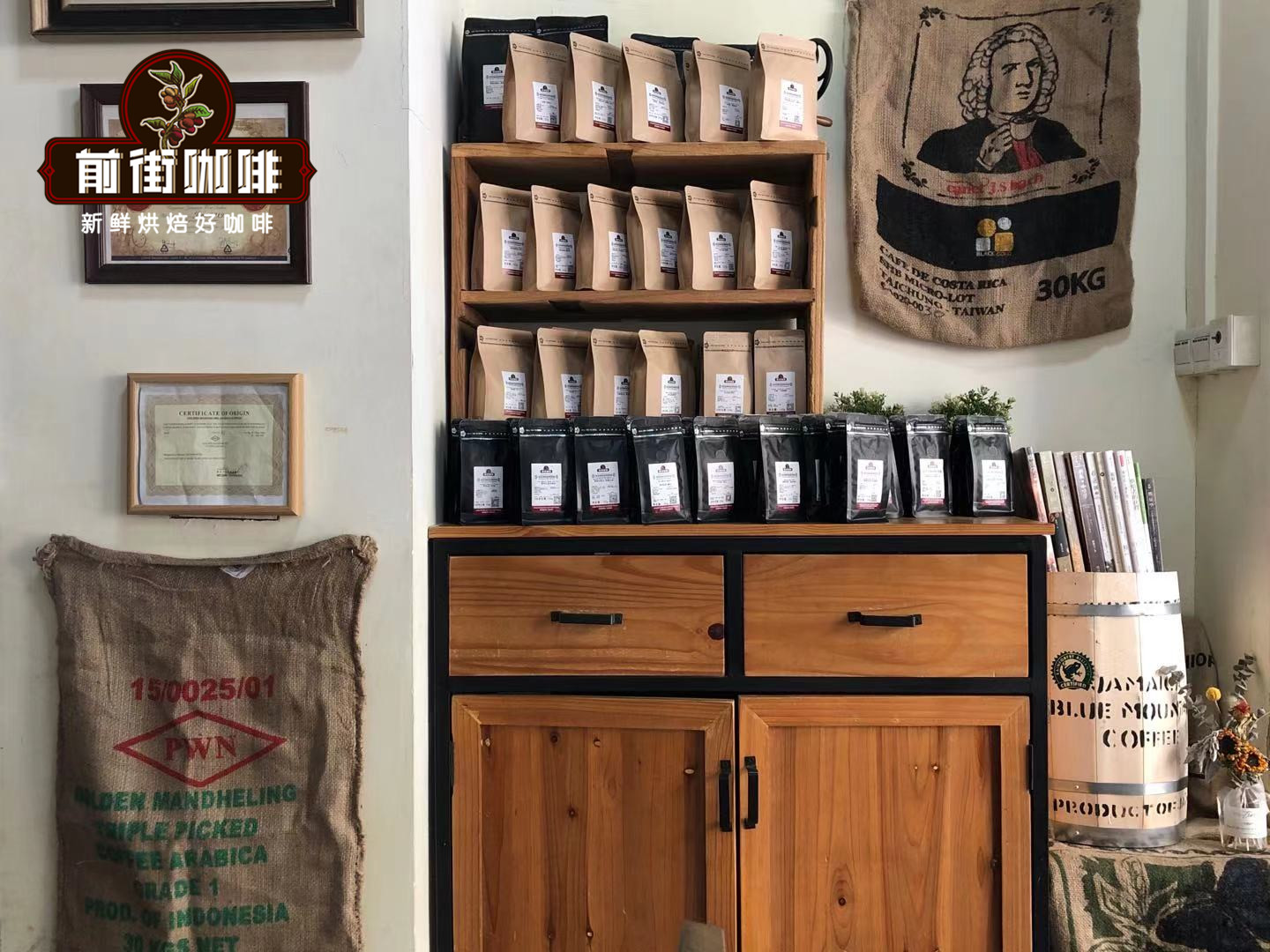
4. Comayagua: altitude: 1000-1500 m; temperature: 14.0-22.0 ℃; precipitation: 1350-1700 mm; varieties: Bourbon, Kaddura, Tibica, Pacas; harvest season: December-March. Comayagua is located between Comayagua and Francisco Moraz á n. The coffee beans in this producing area are tested by cup in front street. Its flavor is mainly lemon flavor, obviously has sweet fruit aroma, taste is as mellow as cream, and has citrus sweetness, and exudes sweetness and chocolate flavor.
5. Agalta Tropical: altitude: 1000-1400 m; temperature: 14.5-22.5m; precipitation: 1300-1950 mm; harvest season: December-March; Variety: Bourbon,Catuai,Typica. Agalta Tropical, which spans parts of the provinces of Olancho, El Paraiso and Francisco Moraz á n, is mainly the eastern province and is the most scattered region. It is composed of 14 protected areas to increase their plant diversity to balance the ecosystem. It is of high ecotourism value. Qianjie Coffee tests the coffee beans in the producing area through the cup, its flavor honey aroma and aroma, it has a strong citrus flavor and subtle and obvious acidity, and pleasant aftertaste.
6. El Paraiso: 1100-1500 m above sea level; temperature: 16-22.5mm; precipitation: 1000-1400mm; harvest season: December-March. El Paraiso is located in El Paraiso in the south of Honduras, bordering Nicaragua. Qianjie tested the coffee beans in the producing area through the cup, its flavor is mainly soft and sour, caramel flavor, taste balanced.
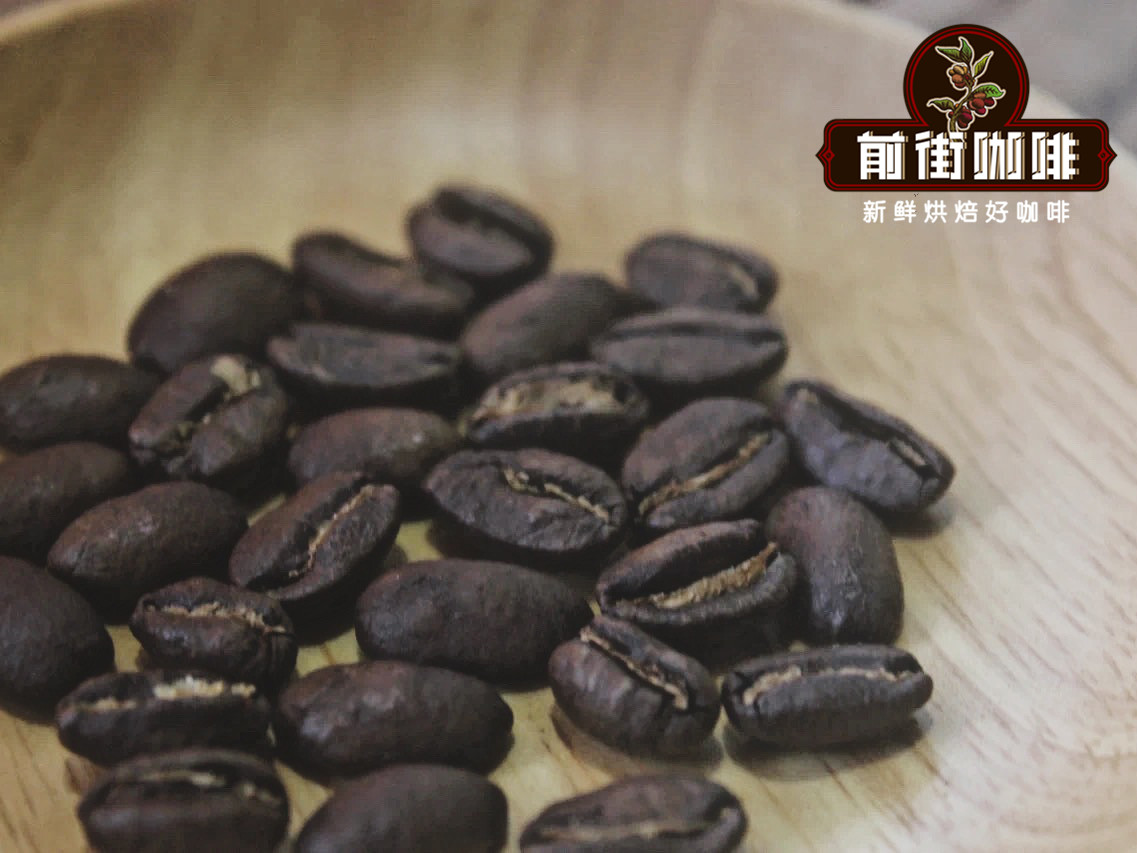
Qianjie Coffee Honduras Laurel Manor washed Palayima species
Production area: El Paraiso
Altitude: 1400 m
Variety: Palayinema Parainema
Treatment method: washing treatment
Grade: SHG
Experience of coffee baking in Qianjie
Baking machine Yangjia 800N (300g baking capacity): immediately enter the pot when the furnace temperature reaches 160℃, the firepower is 130C, the throttle is set up 3, the temperature recovery point is 1mm, the throttle is 36 ", when the furnace temperature is 109℃, the throttle opens to 4, the firepower remains the same; when the furnace temperature is 153℃, the bean meter turns yellow, the grass smell disappears completely, and enters the dehydration stage, when the furnace temperature reaches 1778 ℃, the firepower is adjusted to 50, and the throttle remains unchanged. At 8: 28 ", ugly wrinkles and black markings will appear on the bean surface, and the smell of toast will obviously change to the smell of coffee, which can be defined as a prelude to an explosion. At this time, it is necessary to listen carefully to the sound of the explosion point, until the sound of the explosion point begins to explode, and the throttle will remain the same. After the explosion, the development will be 2 times 39 10", 195 ℃ into the pot.
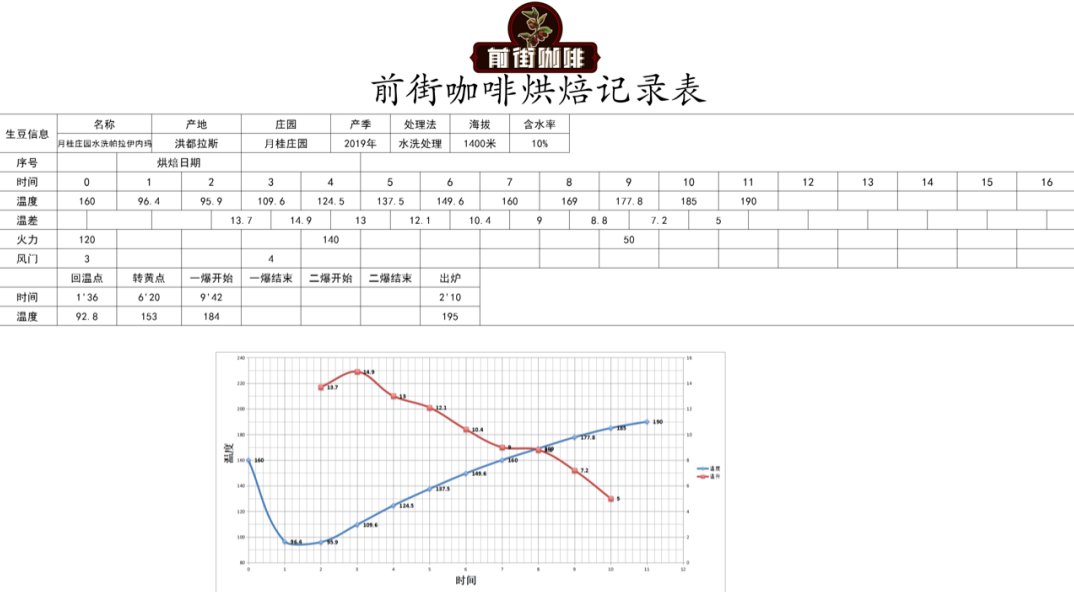
Experience of brewing coffee in Qianjie
Filter cup: Hario V60
Water temperature: 90 ℃
Amount of powder: 15g
Powder / water ratio: 1:15
Degree of grinding: 80% pass rate of standard No. 20 screen
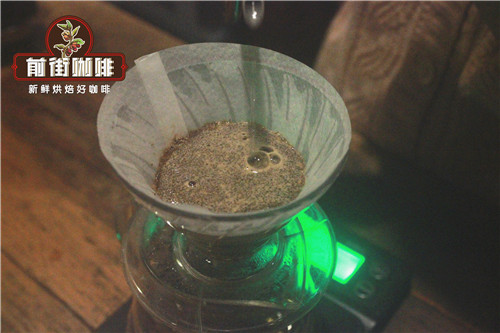
Qianjie coffee is extracted by stages: steaming with 30 grams of water for 30 seconds, small water injection to 125 grams in circles, continuous water injection to 225 grams when the water level is about to be exposed to the powder bed, remove the filter cup when the water level is about to be exposed to the powder bed, and the extraction time is 2: 02 ".
Cooking flavor: citrus, berry, grapefruit peel, cold with nuts, black cocoa aftertaste, obvious acidity of berries, tea feeling.
In addition to the above six major coffee producing areas, there are also some small producing areas, followed by the introduction of the sweet orange manor from the La Paz producing area of La Paz in southwestern Honduras.

Qianjie Coffee Honduras Sweet Orange Manor
Country: Honduras
Producing area: Makala Marcala
Altitude: 1425 m
Variety: Kaduai
Treatment: washing
Roasting Analysis of Qianjie Coffee
This coffee belongs to the SHB grade. It was observed in the front street that the bean density was moderate, and the yellowing point was about 5 minutes and 15 seconds, then reduced the firepower and opened the throttle to enter the Mena reaction. When it exploded, it opened the throttle and kept the firepower. The temperature was about 192.4 ℃, and the beans were dropped in 2 minutes and 00 seconds after the explosion.
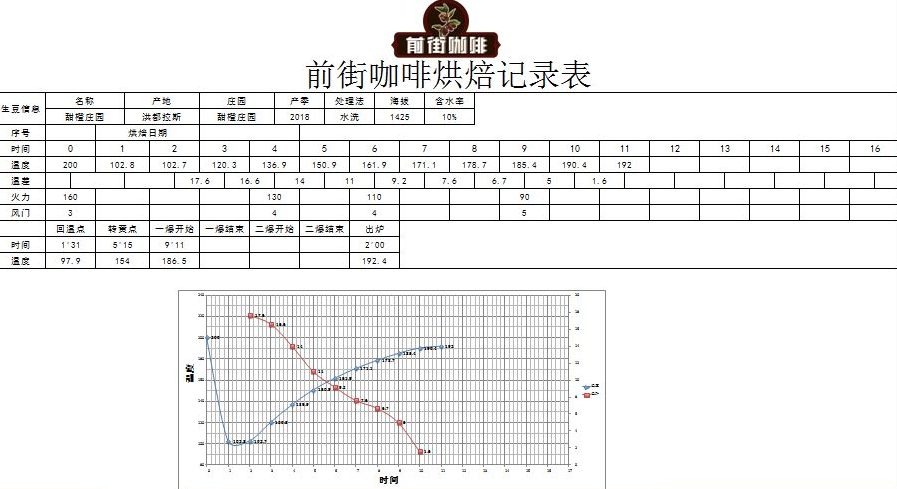
The roaster Yangjia 600g semi-direct fire: the furnace temperature is preheated to 200 degrees Celsius, the throttle is opened for 30s, the firepower is adjusted to 160, the temperature recovery point is 1 minute and 31 seconds; keep the firepower, turn yellow in 5 minutes and 15 seconds, the smell of grass disappears, enter the dehydration stage, the firepower is reduced to 130, the throttle is opened to 4, and when the throttle is opened to 170 degrees, the firepower is reduced to 110 again. When the dehydration is finished at 8pm, the bean surface shows wrinkles and black markings, and the smell of toast changes to coffee, which is a prelude to an explosion, when the firepower remains the same, the throttle opens to 5, and listen to the sound of the blast. at 9: 11, the throttle is fully open. The development time is 2 minutes after the explosion, and it takes 2 minutes to 192.4 ℃.
Suggestion on brewing coffee in Qianjie
Filter cup: Hario V60
Water temperature: 90 ℃
Amount of powder: 15g
Powder / water ratio: 1:15
Degree of grinding: 80% pass rate of standard No. 20 screen
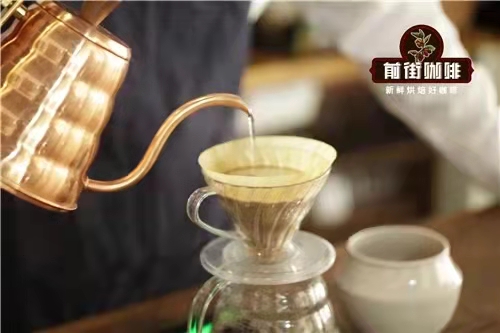
Qianjie coffee staged brewing technique: steaming with 30 grams of water for 30 seconds, small water injection to 125 grams in a circle, water level dropping to 225 grams when the powder bed is about to be exposed, filter cup removed when the water level is about to be exposed to the powder bed, the extraction time is 1: 58 ".
Brewing flavor: with dry aromas of spices and roasted peanuts, making the beans more sour, soft sour berries, orange, cantaloupe, cream, nuts, dark chocolate, and a hint of Xuan rice tea in the back.
Professional coffee knowledge exchange more coffee bean information please follow the coffee workshop (Wechat official account cafe_style)
For more boutique coffee beans, please add private Qianjie coffee on Wechat. WeChat account: kaixinguoguo0925
Important Notice :
前街咖啡 FrontStreet Coffee has moved to new addredd:
FrontStreet Coffee Address: 315,Donghua East Road,GuangZhou
Tel:020 38364473
- Prev

Panama Flower Butterfly Coffee Flavor Description Grind Scale Variety Production Area Treatment Introduction
Panama Flower Butterfly Coffee Flavor Description Grinding Scale Variety Production Area Treatment Method Introduction Boquet production area which is also distributed with many excellent estates, in addition to the famous Emerald Estate, there are Elida Estate, Akaba Estate and other well-known estates, all producing high-quality boutique coffee. And that's not just because of the ecological advantages of Panama's Poquete region and the Baru volcano.
- Next

Introduction to the grinding scale of coffee beans in Fenghuang Manor, Costa Rica
Introduction to the grinding scale of coffee beans in Fenghuang Manor, Costa Rica the excellent Costa Rican coffee is called extra hard beans, which can grow at an altitude of more than 1500 meters. Altitude has always been a problem for coffee growers. The higher the altitude, the better the coffee beans, not only because the higher altitude can increase the acidity of coffee beans and thus increase the flavor, but also
Related
- Detailed explanation of Jadeite planting Land in Panamanian Jadeite Manor introduction to the grading system of Jadeite competitive bidding, Red bid, Green bid and Rose Summer
- Story of Coffee planting in Brenka region of Costa Rica Stonehenge Manor anaerobic heavy honey treatment of flavor mouth
- What's on the barrel of Blue Mountain Coffee beans?
- Can American coffee also pull flowers? How to use hot American style to pull out a good-looking pattern?
- Can you make a cold extract with coffee beans? What is the right proportion for cold-extracted coffee formula?
- Indonesian PWN Gold Mandrine Coffee Origin Features Flavor How to Chong? Mandolin coffee is American.
- A brief introduction to the flavor characteristics of Brazilian yellow bourbon coffee beans
- What is the effect of different water quality on the flavor of cold-extracted coffee? What kind of water is best for brewing coffee?
- Why do you think of Rose Summer whenever you mention Panamanian coffee?
- Introduction to the characteristics of authentic blue mountain coffee bean producing areas? What is the CIB Coffee Authority in Jamaica?

